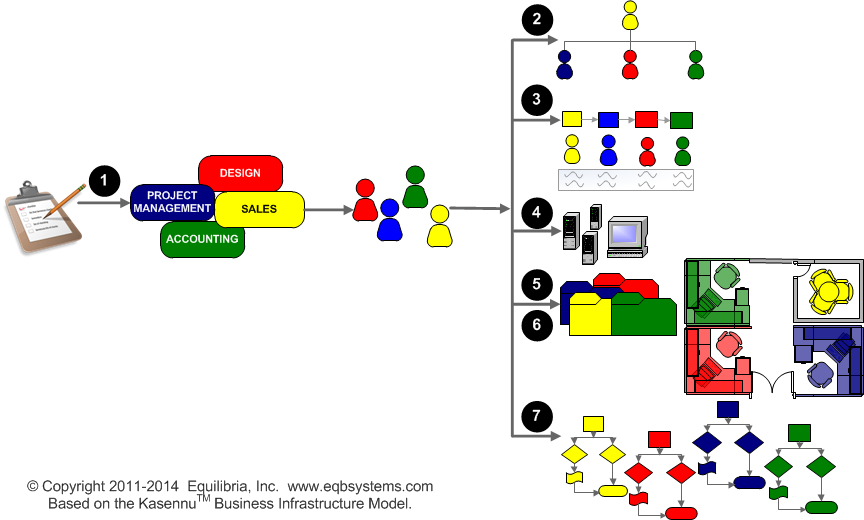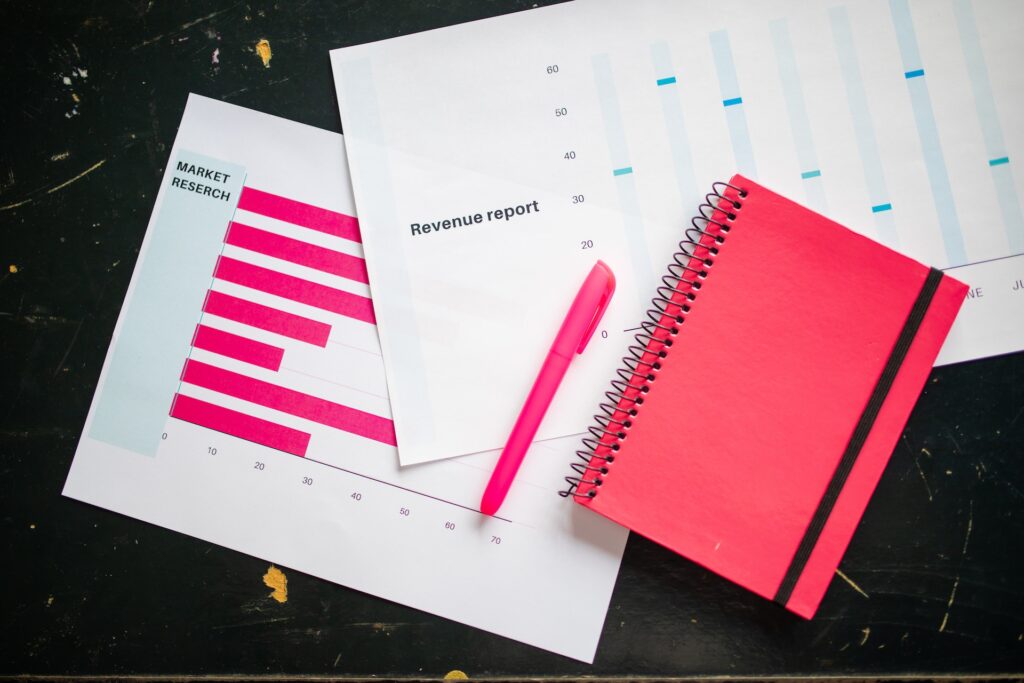As a reminder, Business Infrastructure is the orchestrated linking of a company’s organizational design and the human resources, processes and tools that support that design. Business infrastructure helps small businesses in particular to grow with less pain as it provides a foundation or common ground from which both the front (what the customer sees and experiences) and back office (what happens internally – things the customer does not necessarily see) operations can seamlessly synchronize.
● task redundancy ● failed audits ● high staff turnover
● disorganization ● bad reputation ● denied loans & credit
● late fees/fines ● lawsuits ● high number of customer complaints
● revoked licenses ● low morale ● low customer retention rate
Example Work Flow for Designing and Implementing Business Infrastructure
The following diagram visually illustrates an example of how an entrepreneur can design and implement business infrastructure for a fast growing small business. It is based on the KasennuTM business infrastructure model which consists of seven elements or services explained further below.

Use Business Infrastructure to Organize Back Office Operations
Organization is tantamount to an effective business infrastructure design. An effective business infrastructure design is one that ensures that your company and everyone who does work for your company is engaging in the right activities. “Right activities” primarily includes those activities necessary to: 1) prevent errors or defective in products and services, 2) yield profitable results, and 3) maximize a positive customer experience.
Looking at the above illustration, steps 1 and 2 deal with organization. That is…
1. Define what needs be done, categorize into departments and assign staff. This serves as a foundation for organizing all back office functions to prevent job duplication and reduce turnover. At Equilibria, we refer to this as the Business Parts Analysis.
2. Design a lean management structure that allows for effective dissemination of information, reduces overhead and projects a “well-oiled machine” image. The foundation for creating this lies in the departments and staff identified in step 1. At Equilibria, we refer to this as the Business Design Blueprint.
Use Business Infrastructure to Streamline Back Office Operations
Streamlined processes are critical to ensuring an efficient business infrastructure design. An efficient business infrastructure design is one that ensures that you, as the entrepreneur-owner, and everyone who does work for your company are doing things the right way. Doing things the “right way” means that selected tools and processes are streamlined in such a way that waste is minimized and products and services are delivered on time, within budget and according to specification.
Looking at the above illustration, steps 3 – 7 deal with streamlining. That is…
3. Document the service delivery process by identifying the core department (see the Business Parts Analysis) and segment into stages. Incorporate all staff identified in step 1 (Business Parts Analysis) and the tools used in the process (see steps 4 and 5) and search for opportunities to streamline the client experience. At Equilibria, we refer to this as the Service Delivery Blueprint. It also applies to production processes.
4. Organize and easily locate data using an established protocol for document creation, retention, archival and destruction. Use the departments identified in step 1 (Business Parts Analysis)as a foundation for organizing data. At Equilibria, we refer to this as Electronic Records Management.
5. Organize physical data using the departmental and color-coding identification established during step 1 (Business Parts Analysis). Determine which paper files are private vs. public (accessible to anyone who does work for your company). At Equilibria, we refer to this as Paper Records Management.
6. Structure your physical and/or virtual work environment for seamless information flow by making provisions for all departments, staff, equipment as identified in step 1 (Business Parts Analysis) and physical records as identified in step 5 (Paper Records Management). At Equilibria, we refer to this as Work Space Logistics.
7. Identify processes per department using the job tasks from step 1 (Business Parts Analysis). Document as procedures and then flowchart as processes and determine the performance metrics necessary to ensure quality products and services. The end result is a “playbook” or operations manual chocked full of standard operating procedures. At Equilibria, we refer to this as the Business Process Manual.
Hopefully by now its clear how the way you organize your business into departments sets the stage for how work and information flows amongst the people, processes and tools you work with in your company’s back office operations.
How do you think business infrastructure can help your small business? Please share in the comments below.











